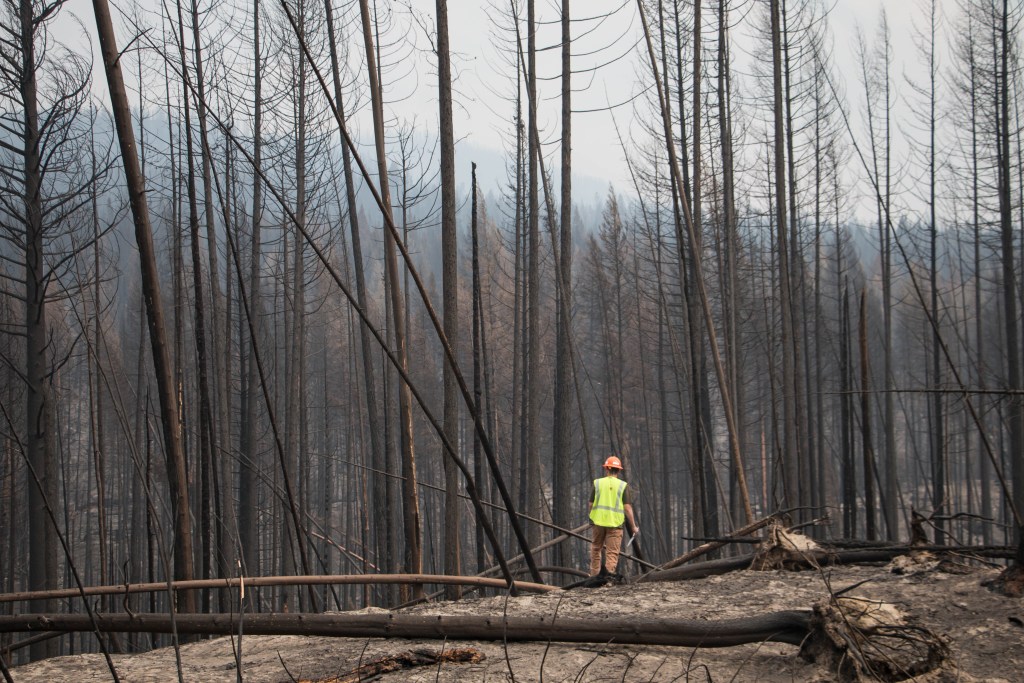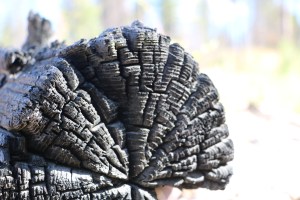California Wildfires
Posted: November 26, 2018Source: The Forest Blog by Russ Vaagen

Trump’s Tweets
When President Trump tweeted about the need to manage our forests to stop wildfires he was right on by most accounts. He didn’t didn’t capture everything, but seems to get the gist. Coming from a man that has lived in New York City and Florida most of his life, I’m happy to see him drawing attention to the issue. The part that is missing is that many of these landscapes are naturally prone to fire. Unfortunately the fire behavior has changed from low-to-moderate intensity to very high intensity.
What I believe the President is trying to convey is that, where appropriate, we need to put public safety and public health ahead of protectionist regulations. He’s absolutely correct. We need to look at new ways of managing our forest. Until we regain control of the situation, we need to be open-minded to significant changes.
Active forest management needs to be in the appropriate places. It’s not meeting the intent of regulations to study actions for years only to see the project area burn before treatments can take place. Think about that. We put rules in place to make sure we don’t damage or harm the forest, but before we complete the necessary red tape our forests burn to the ground. In many cases, as in California, much more than just forests burn. It’s time for a change.
Where do we sell the logs?
New forest management practices are not an excuse to clear-cut our federal forests. It’s not a give away to the forest industry either. In many cases, the forest industry closed up shop decades ago because of a lack of supply. This is directly connected to our current forest health crisis. In the 1980’s there were mills throughout these small, western towns. It provided a market for logging these forests. Rather than resetting our priorities and allowing the mills to transition to a new supply of smaller logs, our national forests stopped offering timber sales. Hundreds of mills shut down and have not returned.

Imagine what might be different if there was a small diameter mill in the vicinity of the Las Plumas and Lassen National Forests coupled with a large-scale forest thinning program for the last 20 years? Would we still see the devastation that we see with the Camp Fire? This isn’t to say that there wouldn’t be fire, but it certainly would perform differently if fuels were reduced to natural levels that support natural fire intervals.
Note that there are mills in the region of Northern California. The fact is that they get nearly all of their supply from private lands. The mills that used to live on supply from federal forests are now empty sites. This is a common shift that has not served our forests or rural communities well.
Forest Management
Many people have responded to these fires saying that logging the forests will only make the problem worse. Others believe that the term “forest clearing” means clear-cutting. We need to stop with the reactions and start getting to the facts. I have been part of a forest collaborative for over 15 years and for most of the last decade, I’ve been the president of the Northeast Washington Forest Coalition. We have worked together with conservation interests, community interests, the forest industry, and the Forest Service to come up with plans that work for the forest. This has resulted in over 40 projects on the Colville National Forest that have received support from the community. Now tribal, recreation, and grazing interests are taking a more active role in the development of larger-scale projects that are 50,000 acres or more.
These landscape level projects are not blatant logging jobs designed to clear-cut our forests and subsidize logs to the local mills. It’s quite the opposite. We focus on what’s needed in our forests and what we can do to get them back to natural resilience. Resilient to fire and other pathogens that negatively affect the forest and the ecosystem it helps maintain. The logs and other products of value are a byproduct of the efforts to restore the forests. This is an ideal situation for our forests.
California fire types
Not all of our fire problems will be solved by managing our forests. In Southern California, these fires including the Woolsey Fire, burn in areas that are open hillsides and canyons with sparse hardwood trees and thick, dense brush. Areas like this burn from time to time when an ignition source meets hot, windy conditions. The common thread these landscapes have with our overgrown National Forests is large amounts of dry fuel close to the ground. Does that mean there isn’t anything that can be done? The short answer is no.
Potentially dangerous fuel levels should always be considered a fire hazard. They need to be dealt with, just like the fuels in the forest. Brush should be regularly monitored and removed to create fuel breaks that don’t negatively impact the overall landscape of ecosystem. Fuels in neighborhoods and around homes need to be monitored and maintained at reasonable levels.
Time for Action
Is it reasonable to believe that climate change is having an effect on fires? I think so. It’s my opinion based on my experience traveling our fire-prone lands, that the primary driver of the intensity and destruction of these fires is the human interaction with the land. Specifically the combination of a hands-off approach to our federal forest land and our continued effort to put all fires out. The culmination of fire suppression and no management creates a powder keg that would be wreaking havoc even if the globe was cooling. Let’s get on the same page and stop the madness that’s destroying our forests and the communities near them.

